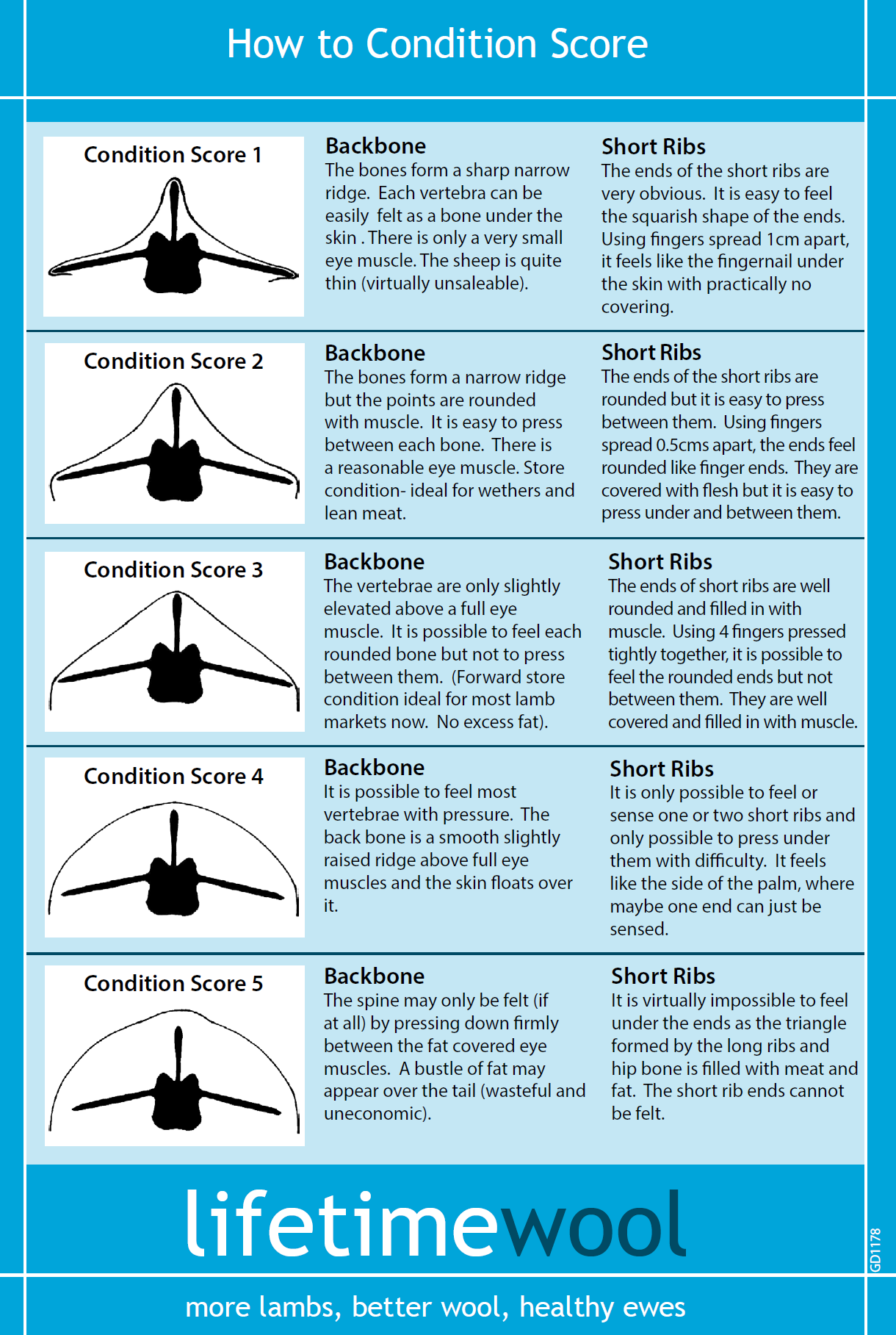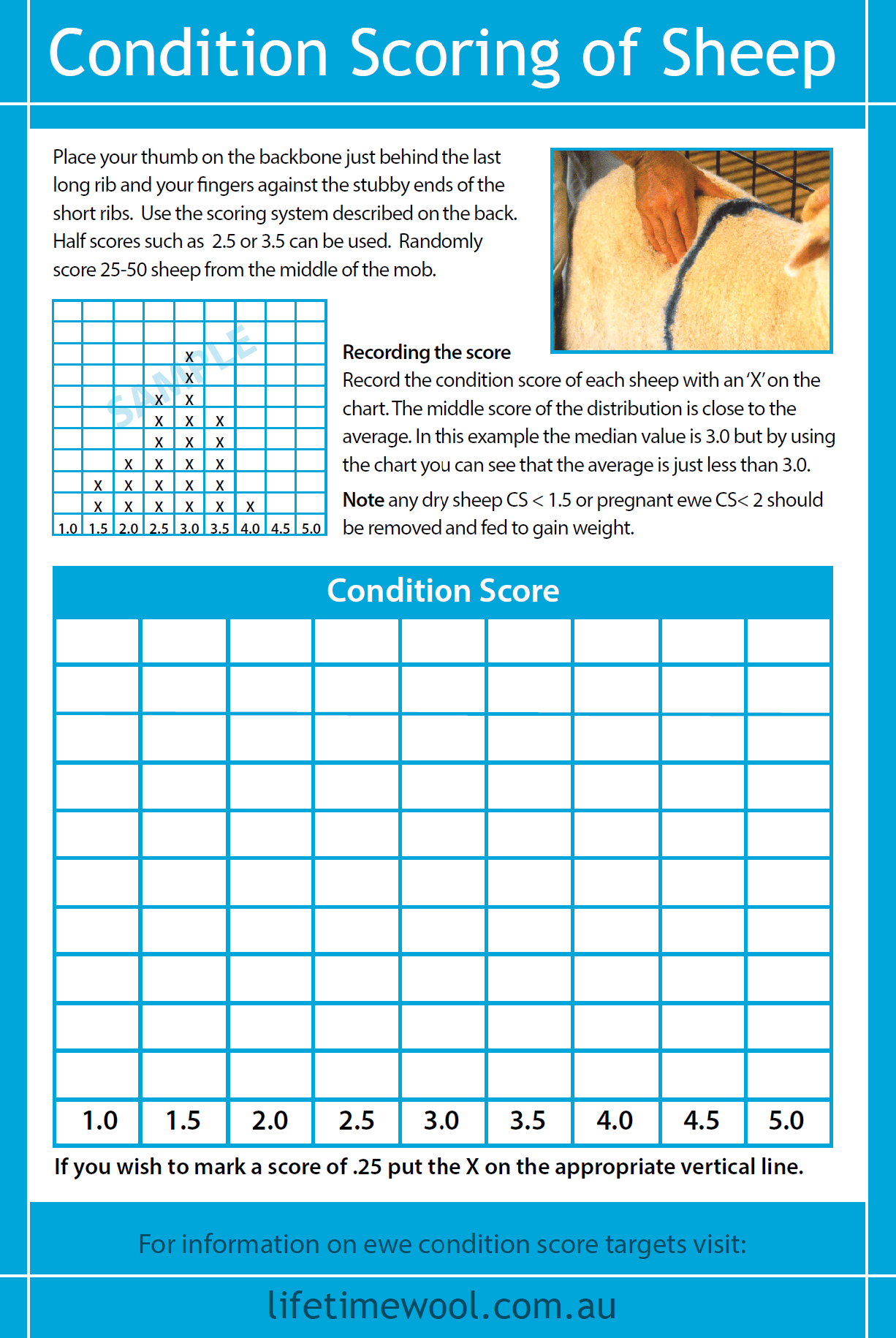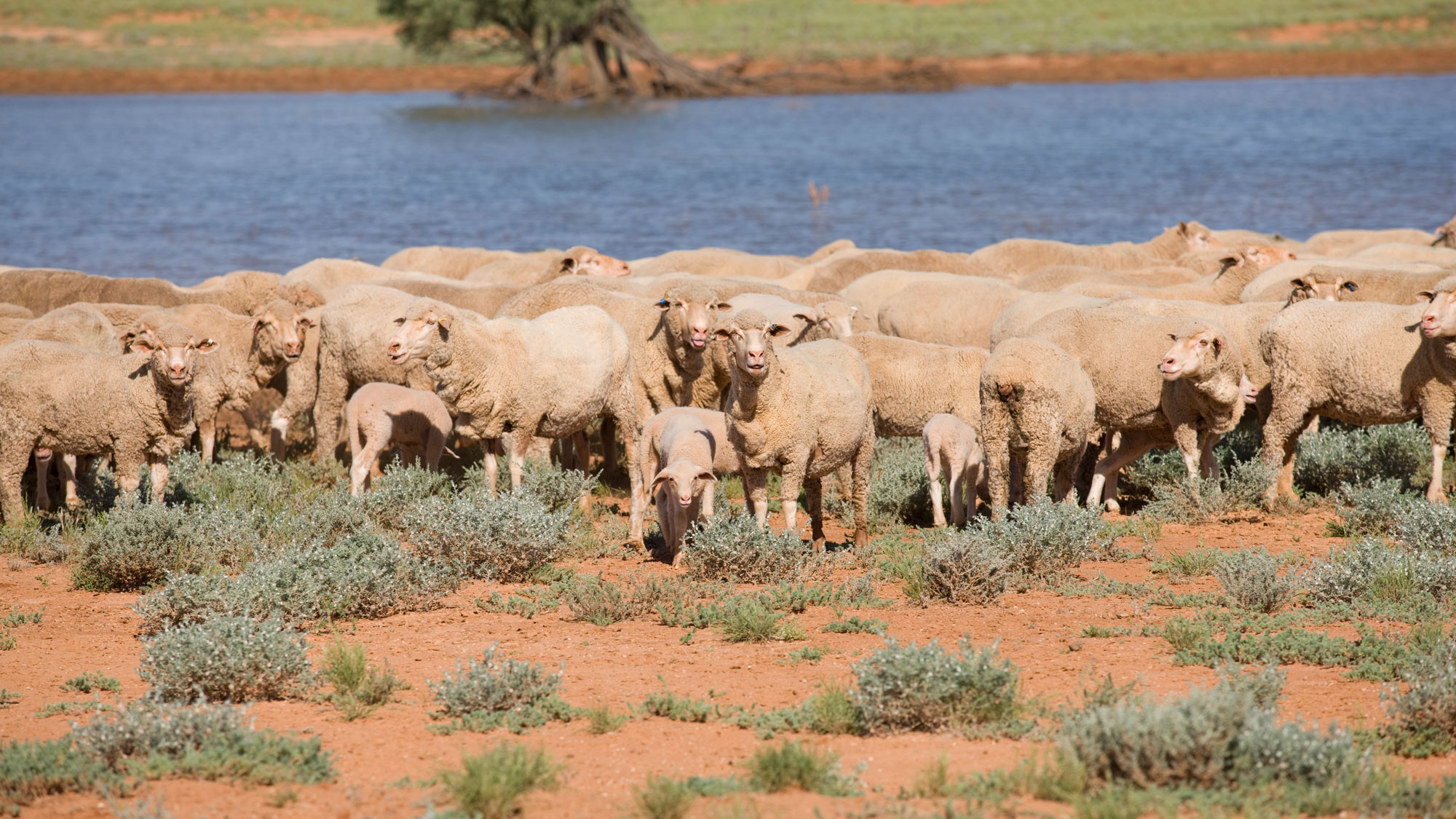Tool 12.8 Condition scoring
Tool 12.8 Condition scoring


Condition scoring is a process used to assess the body reserves of a mature sheep and is done by manual palpation of the tissue cover (fat and muscle) over the shortloin area. Condition score is used across Australia to manage the nutritional status of adult breeding sheep.
A target of condition score (CS) 3 is useful for sheep as it has been shown to deliver a large number of benefits for ewe and lamb survival, improved reproduction outcomes and lifetime wool production. The exception to this is twin bearing ewes following scanning and through lactation, when the CS target increases to 3.3.
Scoring 50 or more sheep at random (from the middle of the mob) provides an accurate indication of the mob’s nutritional status. Sheep are best condition scored in a race when they are standing and relaxed. Be sure you don’t pack the race too tight or too empty – you don’t want the loin squished against the side of the race or other sheep as it bulges and gives an inaccurate score and if the race is too empty sheep will duck under each other and it’s hard to get an accurate feel of the loin.
It is important that sheep are scored each time they are in the yards. Run your representative group from the main flock through the race and record the CS results onto a recording sheet or into the Lifetime Ewe Management (LTEM) app. This provides a visual picture of the spread of CS across the flock as well as an average for the group assessed. This information can then be used to assist in grazing decision making.
Download the Lifetime Ewe Management (LTEM) app:
As discussed in chapter 12.3, it is useful to consider linking a number of livestock operations together to generate labour efficiencies. Examples how this may occur are:
- Lamb marking: wet and drying (manually checking ewes’ udders to determine if they are raising a lamb) should be undertaken to identify which ewes are ‘wet’ or ‘dry’ and dry ewes removed from the mob (to allow the lactating ewes the best feed). CS the wet ewes to understand how they are coping with lactation and if supplementary feed or moving to a fresh paddock is required.
- Weaning: CS the ewes when you bring ewes and lambs in for weaning as this is when ewes will generally be at their lowest CS for the year (lactation requires a lot of energy). Completing a CS at weaning will allow you to understand how much energy the ewes need to get them back to CS3 for the following joining.
- Shearing: Depending on where shearing sits in relation to the breeding program, steps can be taken to influence CS, such as putting the ewe flocks on better feed if CS is lower than targeted.
- Pregnancy scanning: Any ewes that are at lower than target CS can be managed separately to the main ewe flock, particularly if they are twin bearing ewes. CS at this time can inform your management of the pregnant ewes.
The gap between actual CS and target CS provides an indication of the gain required. For example, if a 50 kg standard reference weight (SRW) ewe has a CS of 2 at weaning, she will need to gain one body condition score (around 7 kg) before joining to be at target CS 3. If the lambs are weaned at 90 days (3 months) there are 125 days for this weight gain to occur. This equates to a weight gain of 60 grams per day which is achievable on moderate quality feed (around 8 MJ ME/kg/DM).
Understanding the key concepts around condition scoring and incorporating this simple tool into your routine management can assist you with early intervention when seasonal conditions are not ideal. The information you gather can help you decide, for example, to sell the mob that you have ear marked for first sale. An early identification of a trigger point can allow you to make informed decisions early.
Tool 10.1 Condition scoring in MMFS Module 10 Wean More Lambs contains more information about where, why and how we use condition score to manage adult sheep.
Tool 10.7 Standard reference weight calculator in MMFS Module 10 Wean More Lambs will assist you in performing the SRW calculation for your flock.






